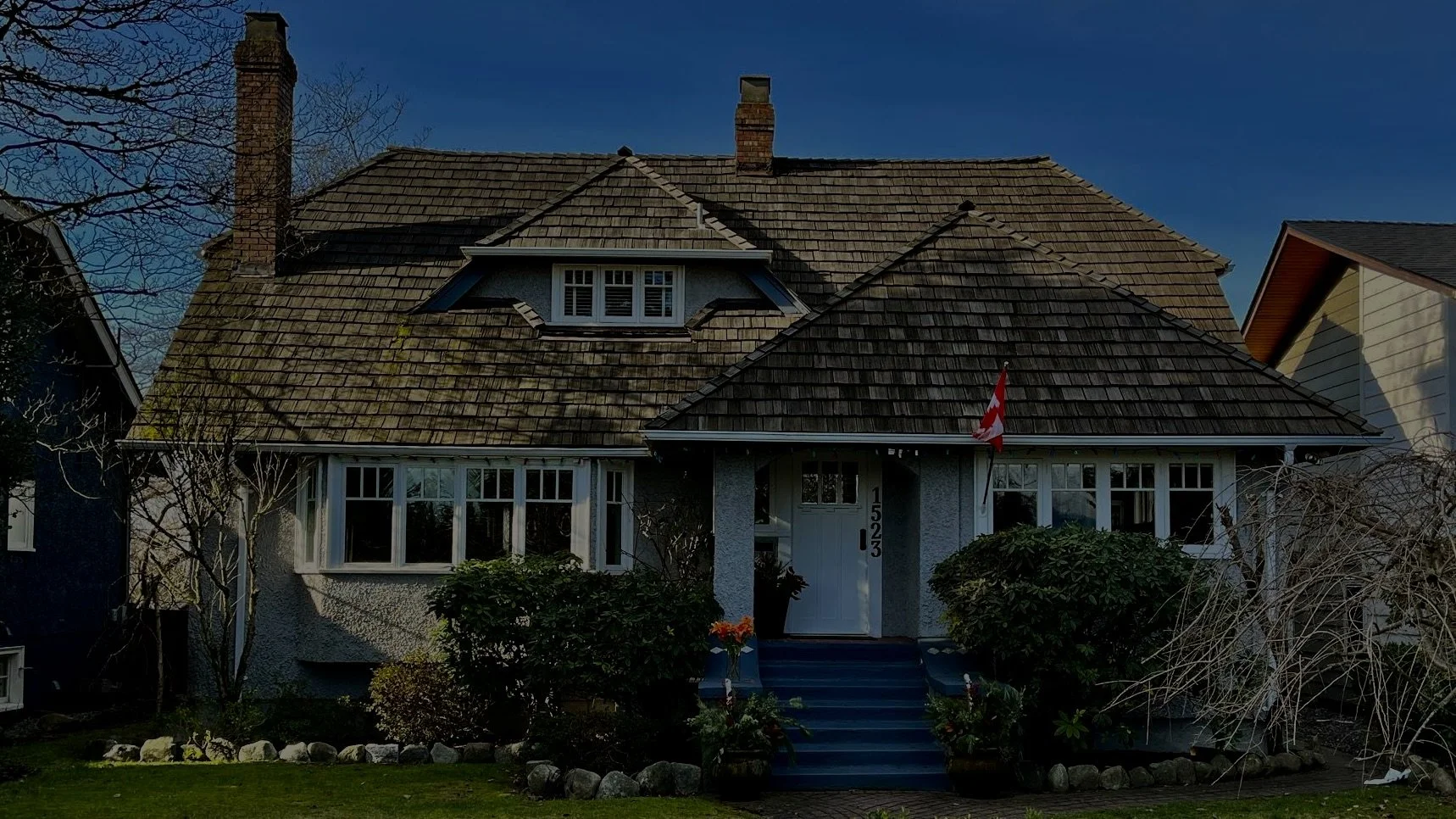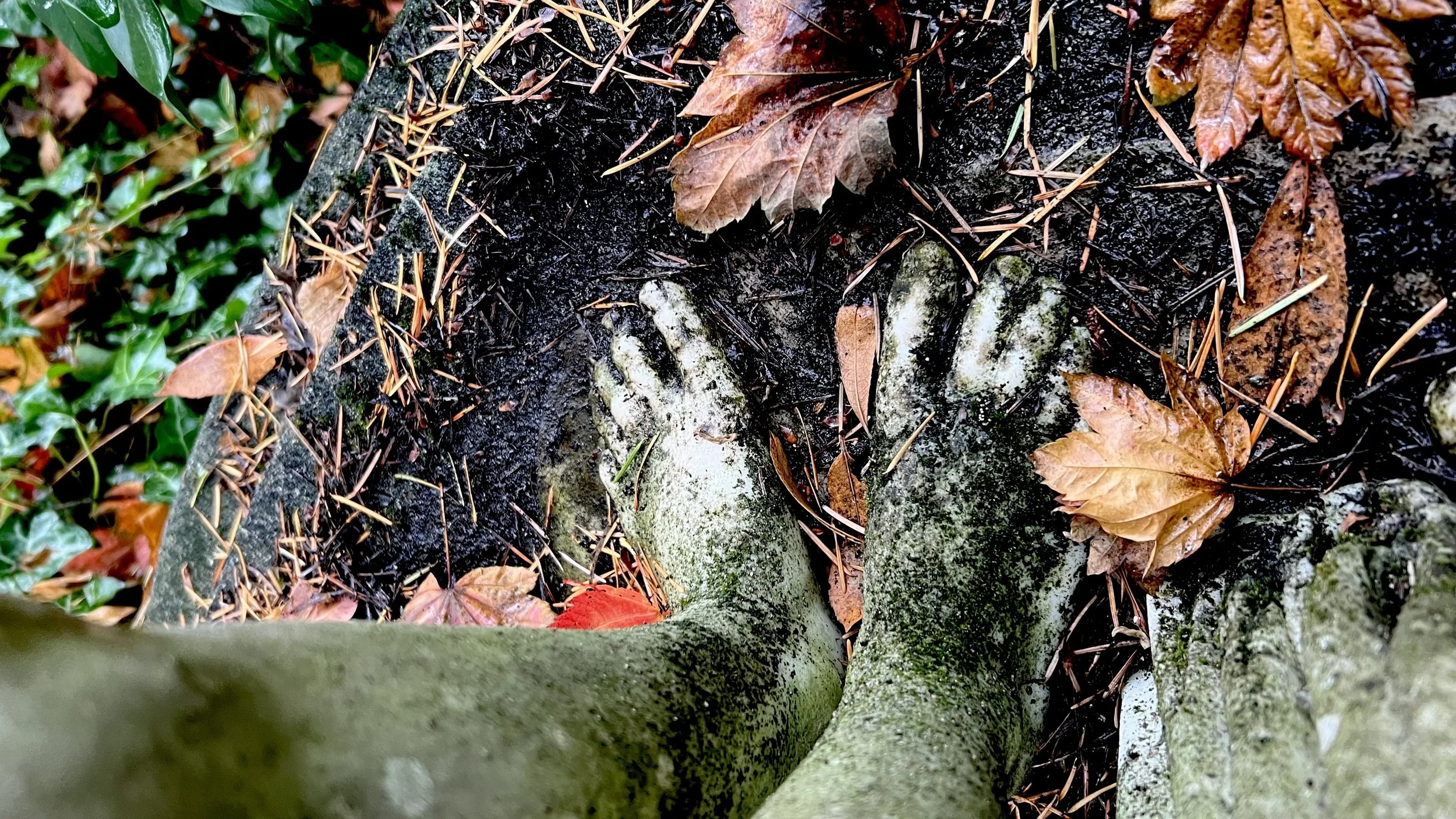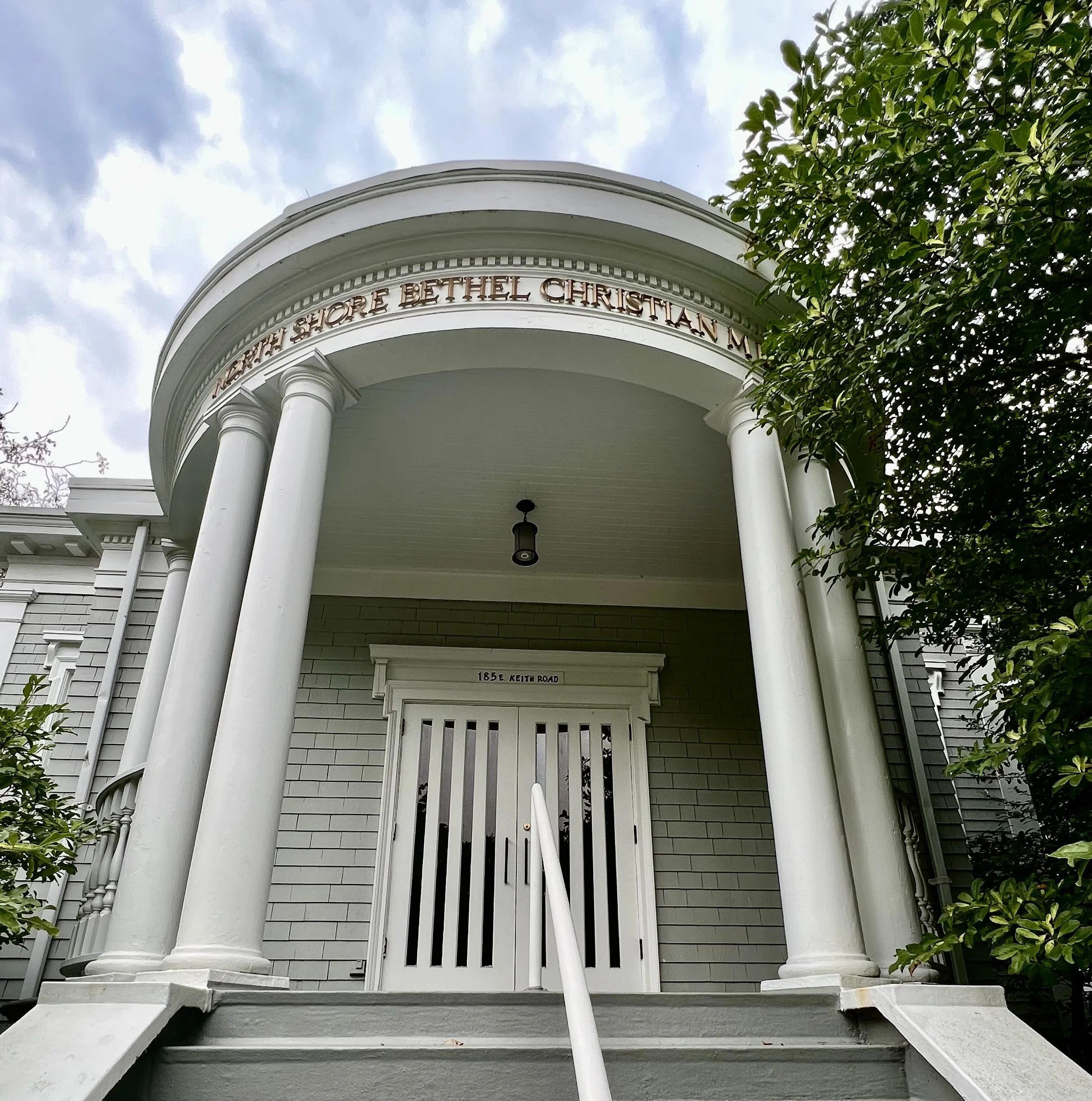The first time I saw the 1911 apartment building at 160 E. 10th Street in North Vancouver called Colonial Apartments, or The Colonial as is written on the front door, I was immediately taken by its gothic and moody exterior obscured by ivy. There is no other building like it on the North Shore and it gives me a feeling of Old California or New Orleans. You may have passed by it and wondered about it, too, but did you know how many honoured and well-known figures in North Vancouver’s history are connected to it?
The Jewel in the Green Necklace
North Vancouver’s Victoria Park is an oasis of lawns, shrubs and trees set amidst high-rises and surrounded by a steady flow of traffic. The east park is the site of the North Vancouver Cenotaph and the 1950s Cold War Air Siren while the west park is home to an equestrian sculpture and granite horse trough, a reminder of the park’s beginnings in the early 19th century when horse power was indeed horse power and when Victoria Park was created as the jewel of Edward Mahon’s vision, the Green Necklace.
The Timeless Pink Palace
The Villa Maris, a pink beacon in the skies of West Vancouver, is one of the most iconic modernist apartment buildings in the Lower Mainland and is a rare Canadian example of New Sensualism, a Miami Beach offshoot of Modernism. From the outside, it screams Miami Modern with its curved wall of parabolic arches and hot pink colour! But what most people don’t know is that the inside is even more “wow”, with many of its original features including a lobby, staircase and pool that was influenced by the Hollywood Regency and Miami Modernism Styles. It’s easy to envision Elizabeth Taylor or Cary Grant sashaying through the lobby, posing by the pool or theatrically descending the staircase! Join us for a virtual walk through the interior!
Striking It Lucky
Taylor Made
Lions Gate Bridge, once described as a bridge to nowhere, is one of three vital links across Burrard Inlet connecting the North Shore and Vancouver. It was built to provide a link to the British Properties, a large and ambitious real estate development in West Vancouver. Both the bridge and the development were the enterprising vision of Alfred James Towle Taylor aka Fred Taylor, who is the Taylor of Taylor Way, which is the portal road to his planned upmarket residences. It was a vision that eventually became a reality. His bridge became a bridge to somewhere – the British Properties and the North Shore.
North Shore Tent Homes
While researching for another blog many months ago, I was perusing the 1913 North Vancouver City Directory. I noticed that, for many individuals, their home was listed as “tent”. It surprised me that a tent was permanent enough to be listed as a person’s home. I was curious to know more about the appearance of these tents, so I visited the websites of the North Vancouver and West Vancouver Archives and entered the search word “tent”. And this is when I went down the proverbial rabbit hole into the warren of tent homes and some of the fascinating families who occupied them. As I read about the families, what struck me was that they were mostly Western European immigrants, who left a civilized life behind to come to the new world to live … in a tent! Clearly, they all came with a sense of adventure but in the end, their best attribute would be perseverance! Life in the new world was definitely not easy.
The Kilbys of Caulfeild
Our guest blogger, Paul Hundal, recently had the pleasure of attending the Centenary Tour of one of the Kilby Houses of Caulfield built 100 years ago in 1924. This event was made possible by the West Vancouver Foundation which supports community-building activities. The house and property have been beautifully maintained in the old English cottage garden style that would have made Francis Caulfeild, the original designer of Caulfeild Cove, proud. The Kilbys themselves are inextricably woven into the social fabric of Olde Caulfeild as one of the original purchasers in 1909 when they built their first cottage as a summer residence.
A Froth of Flowers
Looking for blog inspiration as we hit the official start of summer, I used “summer” as a keyword while searching through archival photos from the District of West Vancouver Archives online collection, and came across a couple of gorgeous photos from a Caulfeild home which still stands today: 4765 Pilot House Road. This home had an exuberant flower garden in the 1930s that immediately brought a smile to my face. The photos really captured my imagination and I wanted to share them with NSH readers.
The Art & Archaeology of a Buried Skatepark
Sidetracked on a Side Street
The Pacific Great Eastern Railway, despite its name, was a Western company. Incorporated in Vancouver in 1912, it was founded to create a railroad between Prince George and the docks of North Vancouver via Squamish and the Howe Sound. Decades passed before this goal was fully achieved due to a section of challenging, mountainous terrain and ongoing financial challenges. It became known as the Province’s Great Expense to Prince George Eventually. However, the story of the PGE Railway is one of ambition and perseverance that created an important, historic route along the waters of the Burrard Inlet and Howe Sound, remnants of which still exist today.
Hendry Hall – Community Builder Extraordinaire
Originally built as an Air Raid Precautionary Post, Hendry Hall has been at the centre of the Lynnmour community in one way or another for 82 years! Currently the home of the talented North Vancouver Community Players, it also served as the Hendry Community Hall for over three decades. Imagine the stories that would be told, if the walls of this tiny but mighty building could talk! But since they cannot, I’m going to tell you what I’ve learned in my research and take you on a virtual tour of this amazing building and its people through the decades!
Beautiful Blackadder Buildings
Take an armchair tour with North Shore Heritage as we look at some of the beautiful buildings in North Vancouver designed by early 20th century architect, Henry Blackadder, as well as his architectural firm with Alexander MacKay, “Blackadder and Mackay”. We’ll look at photos of homes, both large and small and also institutions such as schools and a drill hall, and learn some key points about who lived and worked there as well as design features that make the buildings classic “Blackadder” and “Blackadder and Mackay” designs.
Blackadder Goes Forth. Not ‘Edmund’, but Henry!
Mention the name ‘Blackadder’ and people think of Rowan Atkinson’s character in the BBC comedy series. The final episode of the last series, Blackadder Goes Forth, is known for its final scene, called “Goodbyeee,” which sees ‘Captain Blackadder’ and his side-kick, ‘Baldrick’ going “over the top” into the smoke filled no man’s land of the First World War trenches, presumably to their deaths. Crazy as that sounds, there was a real Captain Blackadder from Dundee, Scotland, who was awarded the Military Cross and whose older brother Henry had a very special connection to North Vancouver.
Hiding in Plain Sight: North Van's Recycled Churches
Did you know that three North Vancouver buildings that are now a recital hall, garden centre and dance school, all started out as some of the earliest churches in their areas? These buildings didn’t have long lives under their built purpose, as their congregations quickly outgrew them, but they have been around for over a century by being either re-purposed or recycled and given new life. One survived as the top of a church, one as the bottom, and one was saved in one piece but moved. Learn the fascinating stories of these three former churches by reading on - you may be surprised to learn where a couple of them have been hiding! I know I was.
Old-Fashioned Christmas
The commercialism of Christmas overwhelms me! We’re bombarded with flyers, Christmas music 24/7, mall traffic and shelves lined with environmentally-unfriendly toys and decorations, sometimes as early as the day after Hallowe’en! How I long for simpler times, without all the hustle and bustle and stress! Join me as we time travel to years gone by to celebrate an old-fashioned Christmas in the homes, schools and businesses of former North Shore residents!
The Mystery of the Marble Lady
If you’ve ever parked at the West Vancouver Municipal Hall in the parking lot by 16th St. and Fulton Ave or driven by on Fulton and missed the beautiful marble statue carved in a Classical Greek style, you’re not alone. The landscaping on the corner of the parking lot has grown over and around the statue and this ‘Marble Lady’ seems to have been forgotten to the mists of time. Where did she come from and why does it appear she’s been forgotten? Read on to find out the fascinating history behind this marble sculpture.
The Legacy of the 2nd WV Boy Scouts
Have you ever wandered up 17th Street in West Vancouver and enjoyed the shade of the green canopy of trees that create an arbour from Marine Drive up to Inglewood? In addition to being a welcome respite from the ravages of climate change, these “heritage” trees, and others on 13th and 14th, have a story to tell!
185 E. Keith Rd: Classically Beautiful
185 E. Keith Rd in North Vancouver is a unique and beautiful building in the Victoria Park area with Classical architectural features. Built in 1925, its design embodies the Classical ideas of durability, strength and symmetry, and these qualities, paired with its beauty, have made it a heritage landmark in the area for nearly 100 years. This ancient design aesthetic paired well with the Christian Science faith, but is also timeless and without denomination, and can be appreciated by anyone. Learn more about this building and other similar local Christian Science churches as well as a little about the faith that built them.
Putting the Grand in Grand Boulevard!
The Ellis Residence at 800 Grand Boulevard is one of the nicest heritage homes I’ve ever seen! It definitely puts the “Grand” into Grand Boulevard! And this was exactly the goal of the North Vancouver Land & Improvement Company when they first proposed the Grand Boulevard development in 1906. Grand Boulevard was marketed as a high-class residential neighbourhood, with a required minimum building cost of $4000, to ensure a certain size and quality of home. The original homes were mostly built in the arts and crafts style including 800 Grand, which was designed by the architectural firm of Maclure and Fox in a traditional half-timbered Arts and Crafts style. Jenny Morgan, my fellow blog writer, and I were privileged to get a tour of this house earlier this year and after our tour, as we walked back to our cars, she told me this is her “dream” house! I then asked her how we might get ourselves adopted by the current owners, Ken and Jenny Tekano, so we could live there too! The house is stunning, from the first glimpse through the pergola and in every room throughout the house. Read on to see why we fell in love with this home, learn more about the restoration work the Tekanos did (in their own words) and learn about the 15 families who came before them.
The Evolution of the Corner Store
Independent Corner Stores, once familiar features of local life, are gradually fading from our street corners. Owning a corner store often gave newcomers not only a livelihood, but also a roof over their heads and, for many, they served as a gateway business to move up the socio-economic ladder. Although many of the original corner stores are gone, a few still exist as corner stores, while many of them have been re-invented as coffee shops and sandwich shops, which still thankfully serve as local gathering spots.







